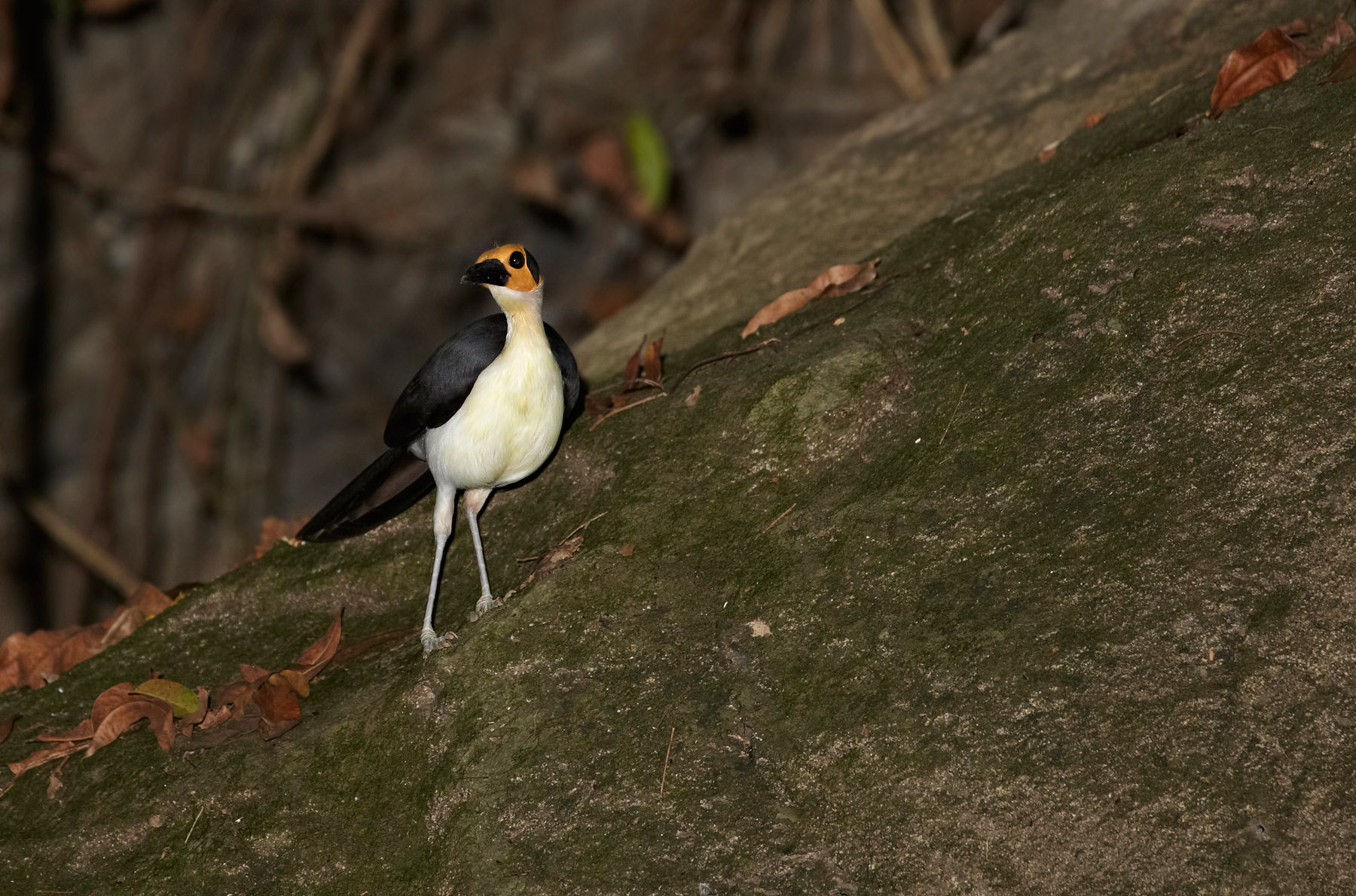
Picathartes gymnocephalus
SUBFAMILY
Picathartinae
TAXONOMY
Corvus gymnocephalus Temminck, 1825, Coast of Guinea. Monotypic.
Classification long controversial. Prior to Delacour’s
placement as a
SUBFAMILY
within babblers, often considered in
crow family (Corvidae). DNA melting curve experiments show
no close relation to babblers, but instead suggest Picathartes belongs
in the same family with Southern African rock jumpers
(Chaetops sp.), with possible relationship to corvids.
OTHER COMMON NAMES
English: White-necked bald crow, yellow-headed rockfowl,
Guinea picathartes; French: Picatharte de Guinйe; German:
Weisshals Stelzenkraehe; Spanish: Picatartes Cuelliblanco.
PHYSICAL CHARACTERISTICS
16 in (40 cm), 7 oz (200 g). Elegantly proportioned bird of unmistakable
appearance. Head unfeathered, with unique black
and orange-yellow skin pattern. Eyes and powerful bill dark.
Mantle, wings, and tail black, or nearly so. Neck and underparts
creamy white.
DISTRIBUTION
Guinea, south to Ghana.
HABITAT
Primary and mature secondary forest with boulders or rock
formations.
BEHAVIOR
Keeps to understory, mostly stays in vicinity of nest sites
throughout the year. May be found singly, in pairs, or in small
groups. Moves about as much by leaping and hopping as by
flying. Noted to be inquisitive of humans entering habitat.
FEEDING ECOLOGY AND DIET
Forages on or near ground for wide variety of insects, as well
as other arthropods, snails, earthworms, frogs, and lizards. Fol-
lows army ant columns in company of other insectivorous
birds, snatching fleeing insects.
REPRODUCTIVE BIOLOGY
Monogamous. Usually nests in colonies of several pairs. Thickwalled,
cup-shaped nests are composed largely of mud, with incorporated
plant material, constructed on rock faces (cave
mouths, boulders, cliffs), or sometimes stream banks or large
fallen trees. Separate roosting and breeding nests thought to be
routine. Nests are reused over periods of at least several years.
Only one or two blotched, variously colored eggs laid, with
rather long incubation period of 23–28 days. Usually two
clutches a year.
CONSERVATION STATUS
Vulnerable. One of Africa’s most well-known threatened birds.
As of 2002, main threats are from forest clearance. Prior to
1973 CITES Appendix I listing, Liberian animal dealers appeared
to have destroyed entire colonies. Recent fieldwork has
located previously unknown populations, such as one in Mont
Peko National Park, Ivory Coast, discovered in 1998. A number
of protected areas include breeding colonies.
SIGNIFICANCE TO HUMANS
Chicks and adults sometimes taken for food. Once popular zoo
bird, as of 2002, none outside Africa since 1998. Future “flagship”
and ecotourism potential.
Photo Gallery of - White-necked picathartes
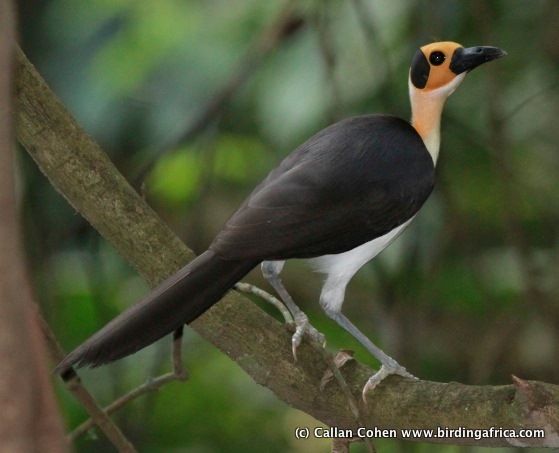
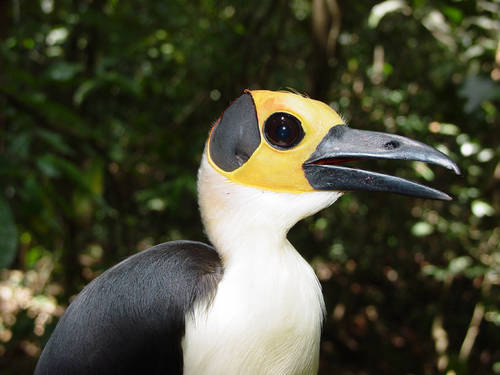
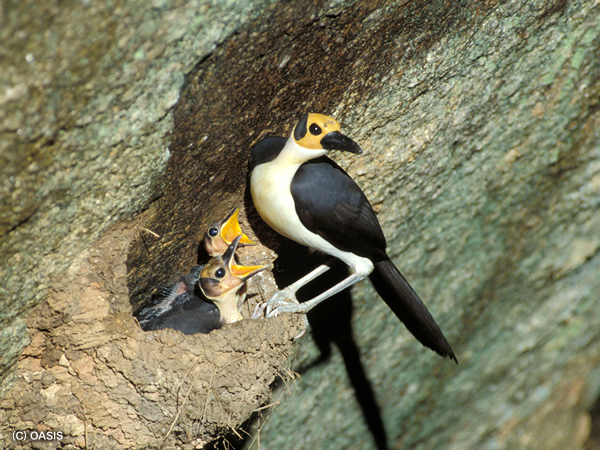
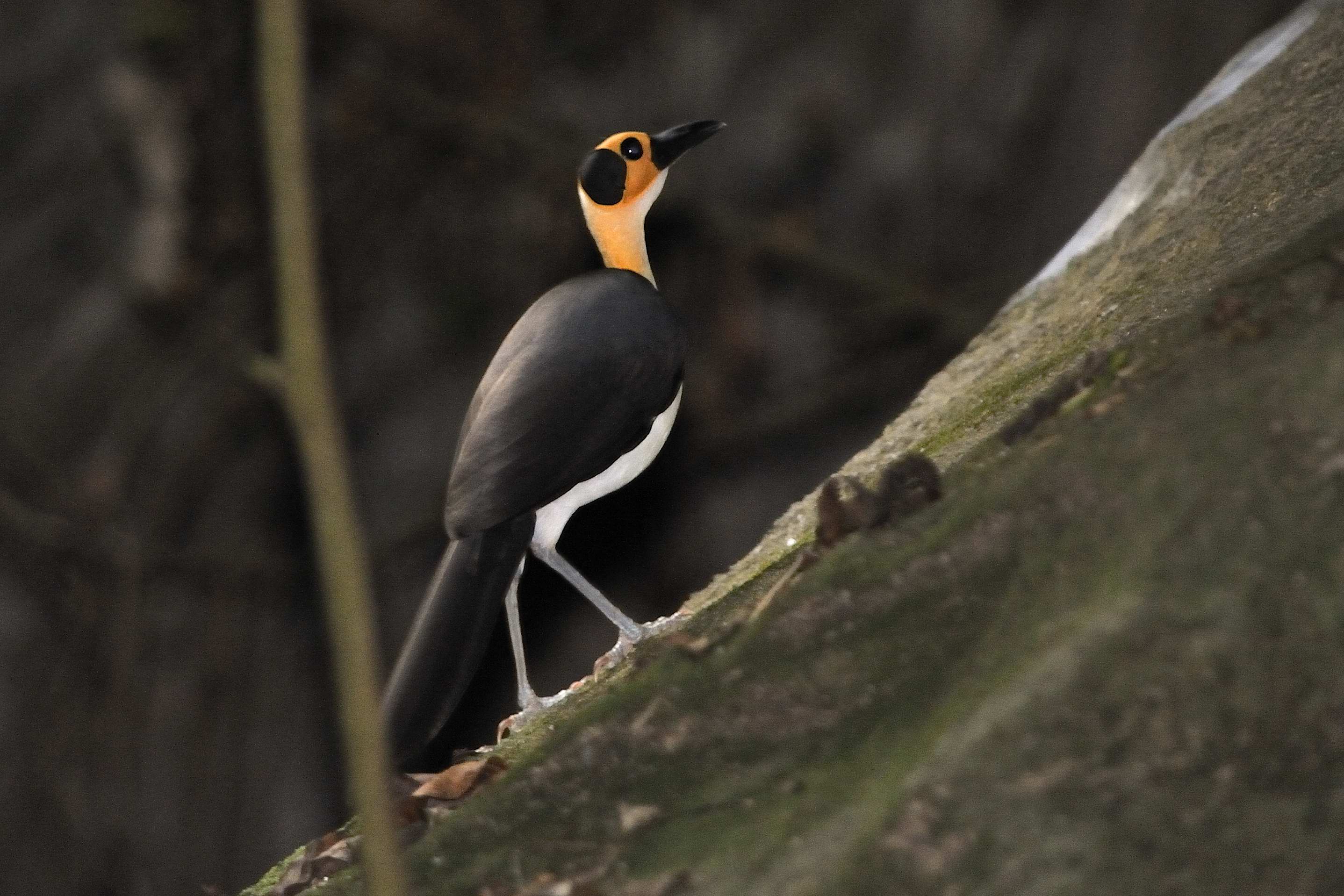
 Animalia Life
Animalia Life